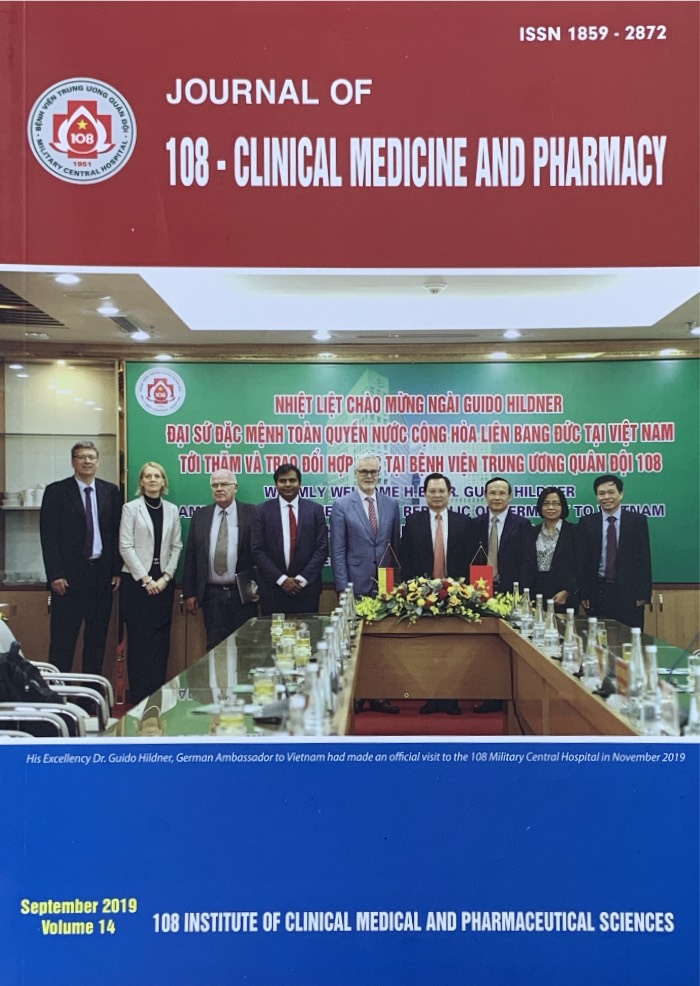A large left ventricular thrombus resolved with dual antiplatelet therapy in combination with acenocoumarol in a young patient after acute inferior myocardial infarction
Main Article Content
Abstract
Objective: To present a rare case with thrombus resolved with dual antiplatelet in combination with acenocoumarol. Case presentation: A 35-year-old man with a history of cerebral venous thrombosis was admitted to our hospital for an acute myocardial inferior infarction. He underwent primary percutaneous intervention of the right coronary artery with proximal to distal stent placement. On the next day, bedside echocardiography revealed a huge mobile thrombus in the left ventricle. Cardiac magnetic resonance also imaging confirmed the presence of a large left ventricular thrombus. The Heart Team assessed the case and recommended surgical intervention. However, the patient refused to undergo the surgery. Thus, he received dual antiplatelet therapy with acenocoumarol aimed at achieving a therapeutic international normalized ratio ranging from 2.0 to 3.0. After 2 months of treatment, the left ventricular thrombus disappeared on echocardiography as well as in cardiac magnetic resonance imaging. Conclusion: Our case illustrates that dual antiplatelet and acenocoumarol therapy, within an effective therapeutic range, can have thrombolytic action on a huge acute intracardiac thrombus.
Article Details
References
2. Brotman DJ, Deitcher SR, Lip GY, and Matzdorff AC (2004) Virchow's triad revisited. Southern Medical Journal 97(2): 213-214.
3. Nihoyannopoulos P, Smith GC, Maseri A, and Foale RA (1989) The natural history of left ventricular thrombus in myocardial infarction: A rationale in support of masterly inactivity. Journal of the American College of Cardiology 14(4): 903-911.
4. Gianstefani S, Douiri A, Delithanasis I et al (2014) Incidence and predictors of early left ventricular thrombus after ST-elevation myocardial infarction in the contemporary era of primary percutaneous coronary intervention. The American Journal of Cardiology 113(7): 1111-1116.
5. Barcellona D, Vannini ML, Fenu L, Balestrieri C, and Marongiu F (1998) Warfarin or acenocoumarol: which is better in the management of oral anticoagulants"? Thrombosis and Haemostasis 80(6): 899-902.
6. A.N. Neskovic, J. Marinkovic, M. Bojic, and A. D. Popovic (1998) Predictors of left ventricular thrombus formation and disappearance after anterior wall myocardial infarction. European Heart Journal 19(6): 908–916.
7. Weinreich DJ, Burke JF, and Pauletto FJ (1984) Left ventricular mural thrombi complicating acute myocardial infarction. Long-term follow-up with serial echocardiography. Annals of Internal Medicine 100(6): 789-794.
8. Domenicucci S, Chiarella F, Bellotti P, Bellone P, Lupi G, and Vecchio C (1999) Long-term prospective assessment of left ventricular thrombus in anterior wall acute myocardial infarction and implications for a rational approach to embolic risk. The American Journal of Cardiology 83(4): 519-524.
9. Yasaka M, Yamaguchi T, Miyashita T, and Tsuchiya T (1990) Regression of intracardiac thrombus after embolic stroke. Stroke 21: 1540-1544.
10. NiemannM GP, Bijnens B, Stork S et al (2012) Differentiation between fresh and old left ventricular thrombi by deformation imaging. Circ Cardiovasc Imaging 5(5): 667-675.
 ISSN: 1859 - 2872
ISSN: 1859 - 2872
